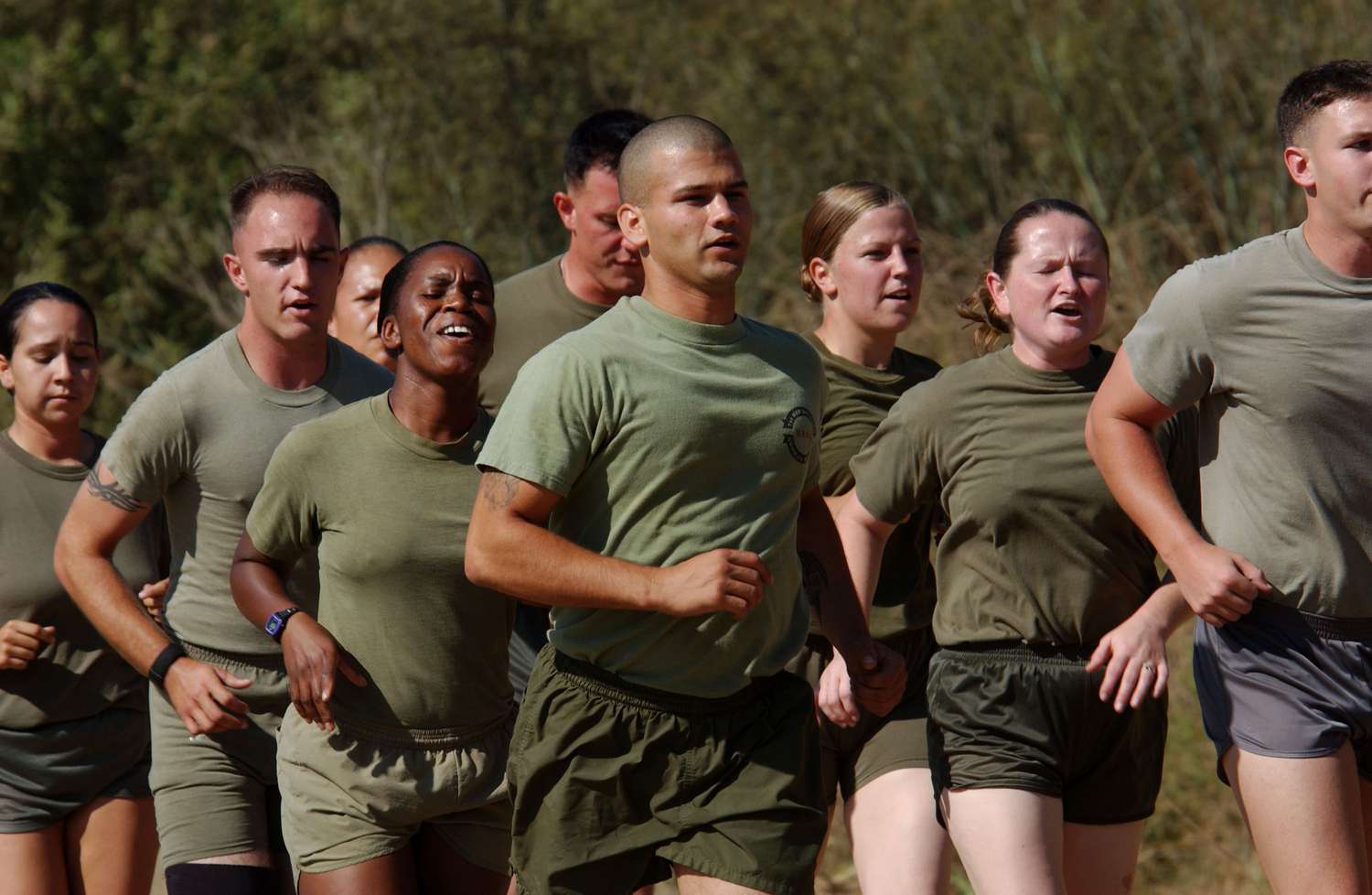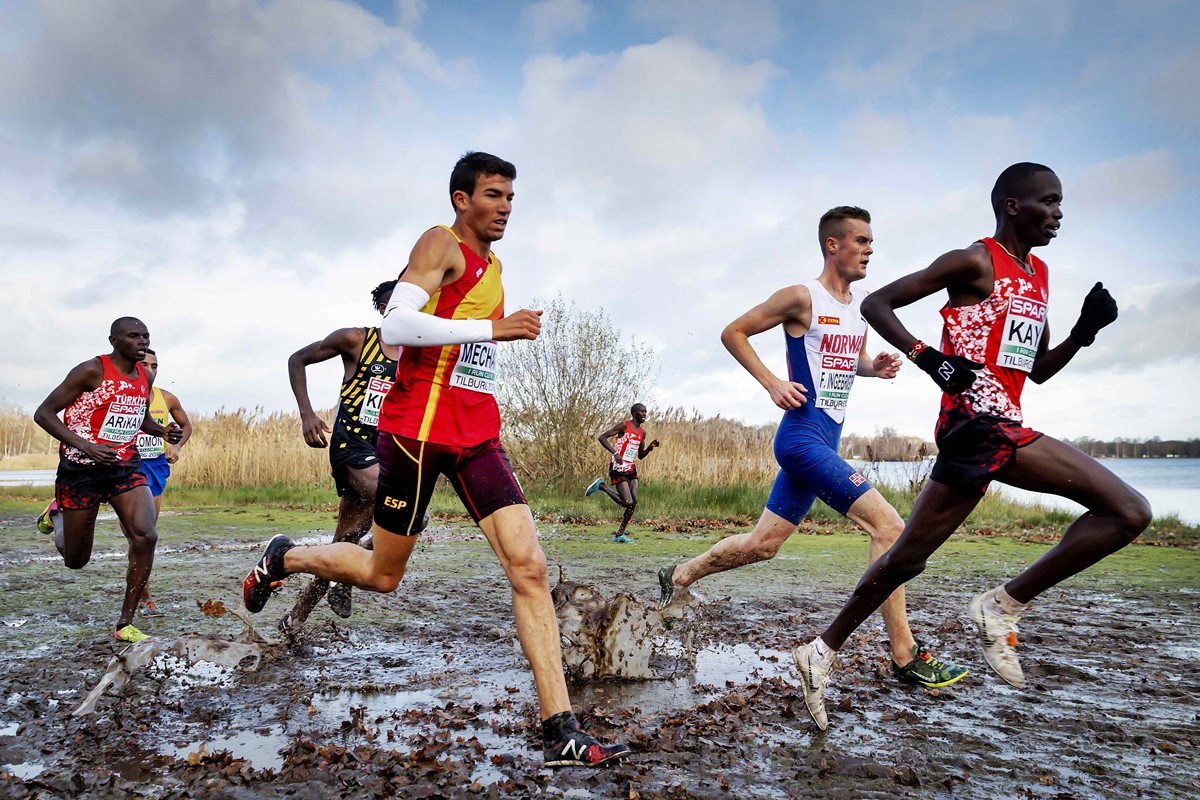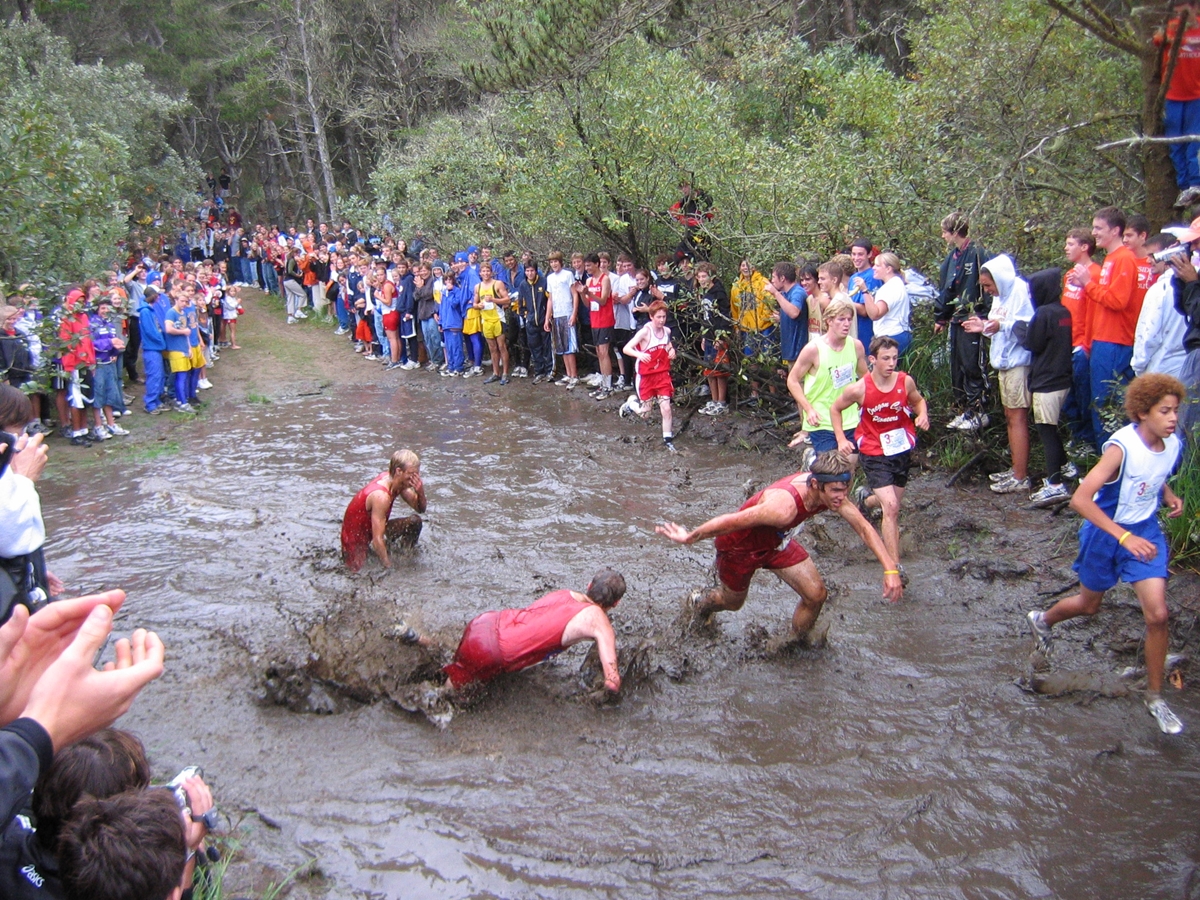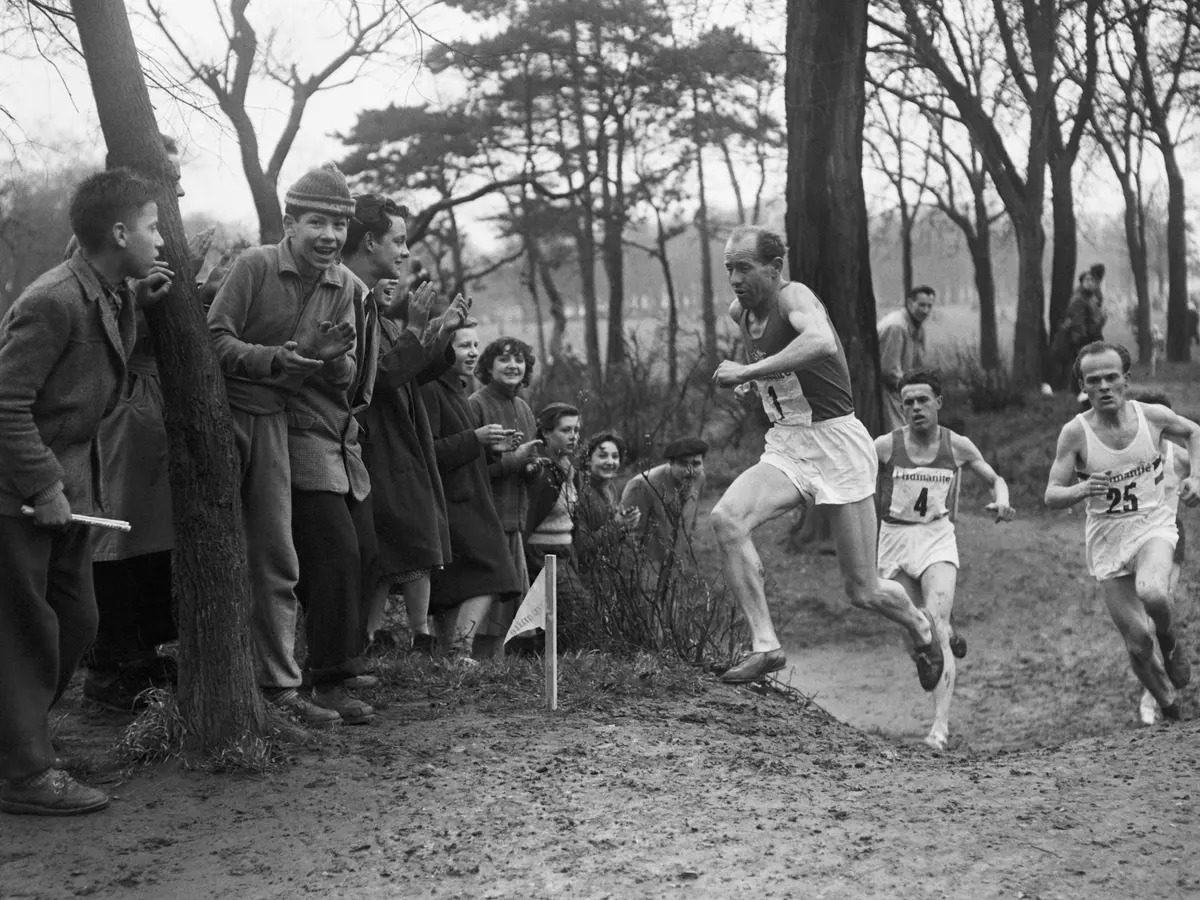Home>Misc>Featured>Why Is The Military Training Long Distance Running


Featured
Why Is The Military Training Long Distance Running
Modified: October 24, 2023
Discover why long distance running is a featured aspect in military training, and its significant benefits for soldiers' physical endurance and mental resilience.
Introduction
Long distance running has long been a staple of military training regimens, and for good reason. The physical demands of military service require soldiers to possess exceptional endurance and mental resilience. Running long distances not only helps build these essential qualities, but also provides a range of benefits that contribute to overall fitness and readiness.
Whether it’s running in formation or completing grueling obstacle courses, the military has a long history of incorporating running as a core component of physical fitness. It is a fundamental aspect of military training, aimed at preparing soldiers for the rigorous challenges they may face in the field.
In this article, we will explore the reasons why the military values long distance running and how it contributes to the physical and mental well-being of soldiers. We will dive into the benefits it provides, from improving cardiovascular fitness and muscular strength to fostering camaraderie and teamwork. We will also discuss the importance of proper nutrition and fueling strategies for long distance runners, as well as effective training techniques to maximize performance and reduce the risk of injury.
Whether you’re a military service member looking to optimize your running routine or someone who wants to understand why long distance running is such an integral part of military training, this article will provide insights into the importance of this physical activity. So, lace up your running shoes and join us as we explore the world of military long distance running.
Physical Demands of Military Service
Military service is physically demanding, requiring soldiers to carry heavy equipment, navigate challenging terrain, and endure long hours of intense physical activity. Whether they are training for combat or engaging in mission operations, soldiers must maintain a high level of physical fitness to perform their duties effectively.
From the moment they enlist, soldiers undergo rigorous physical training to develop the strength, endurance, and agility required for their job. This training includes a variety of exercises and activities, with long distance running being a key component. Running long distances helps soldiers build the necessary cardiovascular fitness and stamina needed to meet the demands of military service.
One of the primary physical demands of military service is the requirement to carry heavy loads for extended periods. Whether it’s a backpack filled with supplies, body armor, or equipment, soldiers must be able to carry these loads over various terrains. Long distance running helps train the body to withstand the strain and build muscular strength and endurance. It improves the ability to maintain proper form and posture while under stress, reducing the risk of injuries and improving overall performance.
In addition to carrying heavy loads, soldiers may also need to engage in running or sprinting during combat situations. The ability to quickly move from one location to another is crucial for their safety and the success of their mission. Long distance running helps enhance speed and agility, allowing soldiers to cover greater distances in a shorter amount of time. It also improves their reaction time, enabling them to quickly sprint or change direction when needed.
Furthermore, military service often requires soldiers to adapt to various environmental conditions. Whether it’s extreme heat, cold, or high altitudes, the body must be prepared to withstand and perform optimally in these conditions. Long distance running helps soldiers develop physiological adaptations that improve their resilience to environmental stressors, such as improved thermoregulation and enhanced oxygen utilization.
Overall, the physical demands of military service necessitate soldiers to be in peak physical condition. Long distance running serves as an effective training tool to develop the strength, endurance, agility, and resilience required to perform their duties with excellence.
Benefits of Long Distance Running for the Military
Long distance running offers a myriad of benefits for military personnel that extend beyond simply improving physical fitness. The training and discipline required for this rigorous activity provide soldiers with invaluable skills and qualities that are critical for their success in the military.
Mental Resilience and Endurance:
Long distance running pushes soldiers to their mental and physical limits. It requires mental strength and endurance to overcome the challenges and push through the pain, fatigue, and self-doubt that may arise during a long run. This mental resilience translates directly to the military, where soldiers often find themselves facing tough situations and needing to stay focused and motivated.
Enhancing Cardiovascular Fitness:
Long distance running is an excellent cardiovascular exercise that elevates heart rate and strengthens the heart. Soldiers who engage in regular long distance running develop better cardiovascular endurance, allowing them to handle prolonged physical exertion more efficiently. This is especially important in military situations where soldiers may need to engage in extended periods of intense activity to complete objectives or carry out missions.
Improving Muscular Strength and Endurance:
Running long distances not only builds cardiovascular fitness but also strengthens and tones muscles throughout the body. It targets muscles in the legs, core, and upper body, enhancing overall muscular strength and endurance. Building these muscle groups is essential for soldiers as it assists in carrying heavy loads, maintaining proper form, and reducing the risk of muscular injuries.
Building Teamwork and Camaraderie:
Long distance running is often done in groups or units, promoting teamwork and camaraderie among military personnel. Running together encourages soldiers to support and motivate each other, fostering a sense of unity and teamwork. This camaraderie extends beyond the run, strengthening bonds and promoting cohesion within the military unit.
Injury Prevention and Rehabilitation:
Proper training in long distance running helps soldiers develop better body mechanics, including running form and posture, which can help prevent injuries. It also aids in the rehabilitation of existing injuries by providing low-impact endurance training that allows the body to heal while maintaining cardiovascular fitness.
These are just a few of the many benefits that long distance running offers military personnel. It not only enhances physical fitness but also cultivates mental resilience, teamwork, and injury prevention, all of which are essential for success in the military.
Mental Resilience and Endurance
Mental resilience and endurance are crucial qualities for military personnel, and long distance running is a powerful tool in developing and strengthening these attributes. Running for extended distances challenges soldiers both physically and mentally, pushing them to their limits and preparing them to overcome obstacles and adversity in the field.
Long distance running requires immense mental strength to keep pushing forward when the body is tired and fatigued. Soldiers must learn to persevere and maintain focus, even when their muscles ache and their energy levels wane. This mental resilience cultivated through long distance running translates directly into military operations, where soldiers often face high-pressure situations that demand mental fortitude and the ability to think clearly under stress.
During long runs, soldiers must cope with physical discomfort and confront mental barriers, such as self-doubt and the desire to quit. Overcoming these challenges builds mental resilience and teaches soldiers to push through their perceived limitations. It instills a mindset of determination, grit, and the belief that they can accomplish any task, no matter how difficult or demanding it may be.
The mental endurance developed through long distance running allows soldiers to maintain focus and concentration over extended periods of time. This is crucial in military situations, where soldiers may need to stay alert and vigilant for hours on end. The ability to maintain mental clarity and sharpness is essential for making sound decisions and executing tasks effectively.
Long distance running also provides an opportunity for soldiers to practice mental strategies, such as visualization and positive self-talk. Visualization involves imagining success and mentally rehearsing challenging situations, helping soldiers build confidence and mental preparedness. Positive self-talk, on the other hand, involves providing oneself with encouraging and motivating messages to overcome obstacles and keep pushing forward.
Furthermore, long distance running offers a unique sense of accomplishment and empowerment. Soldiers can look back on their training runs and races as solid proof of their mental and physical capabilities. The sense of achievement gained from completing a long and grueling run can boost confidence, self-esteem, and overall resilience.
Overall, long distance running plays a crucial role in developing mental resilience and endurance in military personnel. It challenges soldiers to push through discomfort, overcome self-doubt, and build the mental fortitude required to excel in the face of adversity.
Enhancing Cardiovascular Fitness
Cardiovascular fitness is paramount for military personnel, as it directly affects their overall physical performance and endurance. Long distance running is a highly effective method for enhancing cardiovascular fitness, improving the heart’s ability to pump oxygen-rich blood to the muscles and increasing the body’s capacity to efficiently utilize oxygen.
When engaging in long distance running, the heart rate elevates and stays elevated for an extended period. This sustained increase in heart rate forces the heart to work harder, strengthening its muscles and improving its efficiency. Over time, this leads to an increase in the stroke volume of the heart, allowing it to pump more blood with each beat. As a result, the heart becomes more efficient at delivering oxygenated blood to the working muscles, enhancing overall cardiovascular fitness.
Long distance running also stimulates the production of new blood vessels, a process known as angiogenesis. As the body adapts to the demands of long distance running, it creates a network of additional blood vessels to supply oxygen and nutrients to the muscles more efficiently. This improved blood flow helps remove waste products, such as lactic acid, more effectively, reducing muscle fatigue and improving recovery time in strenuous activities.
Engaging in regular long distance running also leads to an increase in the number and size of mitochondria within the muscle cells. Mitochondria are the “powerhouses” of the cells, responsible for converting oxygen and nutrients into energy through aerobic metabolism. The greater the number and size of mitochondria, the more efficiently the muscles can produce energy, resulting in enhanced endurance and performance.
In addition to the cardiovascular benefits, long distance running can help regulate blood pressure and cholesterol levels. It reduces the risk of developing cardiovascular diseases, such as hypertension and high cholesterol, which can be detrimental to military personnel’s overall health and performance. By improving cardiovascular health, soldiers are better equipped to endure the physical demands of military duty and reduce the risk of cardiovascular-related issues.
Overall, long distance running is a highly effective method for enhancing cardiovascular fitness in military personnel. By improving heart strength, increasing oxygen utilization, promoting angiogenesis, and regulating blood pressure and cholesterol levels, soldiers can significantly improve their endurance and overall physical performance.
Improving Muscular Strength and Endurance
Long distance running is not only beneficial for cardiovascular fitness but also plays a significant role in improving muscular strength and endurance among military personnel. Regular participation in long distance running helps soldiers develop stronger muscles throughout the body, enhancing their overall physical capabilities.
Running long distances engages a variety of muscle groups, particularly those in the legs, core, and upper body. The repetitive motion of running activates and strengthens muscles such as the quadriceps, hamstrings, calves, glutes, and hip flexors. These muscles provide the power and stability needed for efficient running, allowing soldiers to maintain proper form and reduce the risk of injuries during other physical activities.
Long distance running also improves muscular endurance, which is essential for military personnel who often need to perform physical tasks for extended periods. Endurance training helps delay the onset of muscle fatigue, allowing soldiers to sustain their performance for longer durations without feeling exhausted.
Moreover, running long distances requires soldiers to develop proper running mechanics, focusing on factors such as stride length, foot strike, and cadence. This emphasis on technique helps soldiers efficiently utilize their muscles, reducing wasted energy and improving overall running efficiency. Better muscle coordination and activation result in enhanced muscular strength and endurance.
Running uphill and on uneven terrain, which are common scenarios in military situations, adds an extra challenge that further strengthens muscles. Uphill running targets the leg muscles, especially the calves and glutes, as they work harder to propel the body against gravity. Running on uneven terrain engages additional stabilizer muscles throughout the body, improving overall muscle strength and stability.
Long distance running can also be combined with other strengthening exercises, such as hill sprints, interval training, and bodyweight exercises. These activities further enhance muscular strength and endurance, providing a well-rounded approach to physical fitness for military personnel. Proper strength training can help prevent injuries, improve performance, and allow soldiers to better perform their duties in demanding situations.
Incorporating long distance running into military training can significantly improve muscular strength and endurance. By targeting key muscle groups, developing proper running mechanics, and supplementing with strength training exercises, soldiers can enhance their physical capabilities and perform at their best.
Building Teamwork and Camaraderie
Long distance running not only contributes to physical fitness but also fosters a sense of teamwork and camaraderie among military personnel. Running together as a unit or participating in races as a team creates a shared experience that strengthens bonds and promotes a sense of unity.
When soldiers run together, they develop a support system and motivate each other to push through the challenges. They can provide encouragement, exchange tips and strategies, and help one another overcome mental and physical barriers. This collaborative environment builds trust and solidarity among team members, essential qualities for effective teamwork in the military.
Long distance running also provides an opportunity for soldiers to practice communication and coordination. Running in formation requires precise synchronization and alignment, fostering discipline and the ability to work together seamlessly. This cohesion extends beyond the run itself, improving teamwork and coordination in other military activities and operations.
Participating in races as a team further strengthens camaraderie among military personnel. Training and preparing for a race together creates a shared goal, motivating soldiers to work towards a common objective. The shared experience of training, planning, and completing a race fosters a sense of accomplishment and pride, creating lasting memories and bonds among teammates.
Running events, such as military-sponsored races or charity runs, provide an opportunity for soldiers to interact with members of the community. This engagement fosters a sense of partnership and goodwill between the military and civilian population, reinforcing the importance of teamwork beyond the military setting.
Moreover, running alongside fellow soldiers allows for the exchange of experiences and stories, bridging gaps and fostering a sense of camaraderie among individuals from different ranks and backgrounds. The shared struggle of enduring a long run creates a level playing field, promoting equality and respect among teammates.
In summary, long distance running serves as a platform for building teamwork and camaraderie within the military. Through shared experiences, support, and the pursuit of common goals, soldiers develop stronger bonds, effective communication, and a sense of unity that extends beyond the running track.
Injury Prevention and Rehabilitation
Long distance running not only improves physical fitness but also plays a significant role in injury prevention and rehabilitation among military personnel. Incorporating proper training and techniques can help reduce the risk of injuries and aid in the recovery process for soldiers who are dealing with physical ailments.
Regular long distance running strengthens muscles, tendons, and ligaments throughout the body, making them more resilient to injuries. It helps improve the stability of joints, particularly in the lower body, reducing the risk of sprains or strains during other physical activities. Strong and well-conditioned muscles provide better support and protection for the body, mitigating the likelihood of injuries in military operations and training exercises.
Long distance running also helps soldiers develop proper running mechanics, including stride length, foot strike, and posture. Good running form encourages proper alignment and reduces the risk of overuse injuries, such as shin splints or plantar fasciitis. Learning and practicing efficient running techniques can significantly decrease the likelihood of these common running injuries among military personnel.
In cases where soldiers do experience injuries, long distance running can aid in the rehabilitation process. Running is a low-impact activity that puts less stress on the joints compared to high-impact exercises. This allows injured soldiers to maintain cardiovascular fitness and endurance while allowing their bodies to heal.
Rehabilitation through running involves gradually returning to running after an injury, following a structured and supervised program. This program focuses on gradually increasing intensity, duration, and distance, allowing the body to adapt and rebuild strength without exacerbating the injury. Running can help improve blood flow to the injured area, promote healing, and decrease inflammation, aiding in the recovery process.
In addition, long distance running can help identify and address imbalances or weaknesses in the body that may contribute to injuries. It allows soldiers to become more attuned to their bodies, notice any discomfort or abnormal sensations, and take appropriate action to prevent further injury. By understanding their bodies and listening to their limits, soldiers can make informed decisions about their training and minimize the risk of injury.
Overall, long distance running is an effective tool in injury prevention and rehabilitation for military personnel. It strengthens muscles, promotes proper form, and provides a low-impact activity for maintaining fitness during the recovery process. By incorporating running into their training and rehabilitation programs, soldiers can reduce the risk of injuries and recover more efficiently when injuries do occur.
Nutrition and Fueling for Long Distance Running
Nutrition plays a vital role in supporting the physical demands of long distance running, especially for military personnel. Proper fueling and hydration are essential for maintaining energy levels, enhancing performance, and optimizing recovery. A well-balanced diet that provides the necessary nutrients is crucial for soldiers to sustain their endurance and overall health during long distance running.
Prior to a long distance run, it is important to consume a meal that is rich in carbohydrates, moderate in protein, and low in fat. Carbohydrates serve as the primary fuel source during prolonged exercise, as they are readily converted into glucose for energy. Including complex carbohydrates such as whole grains, fruits, and vegetables in the pre-run meal provides a steady release of energy during the run.
During long distance running, hydration is of utmost importance. Soldiers should maintain proper fluid intake to prevent dehydration and optimize performance. Drinking water or sports drinks at regular intervals can help replenish fluids lost through sweat and maintain electrolyte balance. It may also be necessary to consume energy gels, bars, or other easily digestible carbohydrates to provide additional fuel and sustain energy levels throughout the run.
Post-run nutrition is crucial for recovery and replenishing glycogen stores. Consuming a combination of carbohydrates and protein within 30-60 minutes of completing a long distance run helps kickstart the recovery process. Carbohydrates restore glycogen levels, while protein aids in muscle repair and growth. Including sources of lean protein such as chicken, fish, or tofu, along with complex carbohydrates like sweet potatoes or quinoa, can promote optimal recovery.
In addition to macronutrients, soldiers should also consider proper micronutrient intake. Adequate intake of vitamins and minerals is essential for maintaining overall health and supporting physical performance. A well-balanced diet that includes a variety of fruits, vegetables, whole grains, lean proteins, and healthy fats can help meet these nutritional needs.
It is recommended for soldiers to work closely with a registered dietitian or nutritionist who is familiar with the specific needs and demands of long distance running in military settings. These professionals can provide personalized guidance and ensure soldiers have an appropriate nutrition plan to support their training and performance goals.
Proper nutrition and fueling are essential for military personnel engaged in long distance running. By focusing on a well-balanced diet, adequate hydration, and appropriate timing of meals and snacks, soldiers can optimize their performance, reduce the risk of fatigue and injury, and support overall health and well-being.
Training Techniques and Strategies
Effective training techniques and strategies are essential for military personnel engaging in long distance running. These methods can enhance performance, prevent injuries, and optimize overall fitness levels. Implementing a well-structured training program and utilizing specific strategies can help soldiers reach their running goals and improve their endurance capabilities.
Establishing a training program that incorporates a mix of different running workouts is important for building endurance and improving performance. This can include long runs, tempo runs, interval training, and recovery runs. Long runs help build aerobic capacity and enhance endurance, while tempo runs focus on running at a challenging but sustainable pace to improve speed and lactate threshold. Interval training involves alternating between high-intensity sprints and recovery periods to enhance speed and improve anaerobic capacity. Recovery runs allow for active recovery and aid in the reduction of muscle soreness.
Gradual progression is key in long distance running training. Soldiers should start with a distance and intensity level that aligns with their current fitness level and gradually increase the duration and intensity of their runs over time. This approach allows the body to adapt progressively and reduces the risk of overuse injuries.
Cross-training can also complement long distance running training. Engaging in activities such as cycling, swimming, or strength training can help develop overall fitness, improve muscle strength, and prevent overuse injuries. These cross-training activities work different muscle groups and provide a break from the repetitive impact of running.
Mental strategies are also an important aspect of training for long distance running. Setting goals, visualizing success, and practicing positive self-talk can help soldiers maintain motivation and focus during training and races. Breaking down long runs into smaller, manageable distances or focusing on specific landmarks along the route can also help soldiers stay mentally engaged and overcome the challenge of running long distances.
Proper recovery is essential for long distance running training. Adequate rest days and sleep are necessary for the body to adapt, repair, and strengthen. It is also important to incorporate stretching, foam rolling, and other recovery techniques to reduce muscle tightness and improve flexibility. Paying attention to nutrition and hydration, as discussed earlier, also plays a critical role in recovery and optimizing performance.
Lastly, it is crucial for soldiers to listen to their bodies and adapt their training as needed. Training should be adjusted based on individual fitness levels, recovery capacity, and any signs of fatigue or injury. Communication with trainers or coaches is vital in ensuring a training program that suits individual needs and goals.
By implementing proper training techniques, utilizing training strategies, and prioritizing recovery, military personnel can improve their long distance running performance, reduce the risk of injuries, and optimize their overall fitness levels.
Conclusion
Long distance running plays a crucial role in the physical and mental fitness of military personnel. The physical demands of military service require soldiers to possess exceptional endurance, strength, and mental resilience, all of which can be developed through long distance running. From improving cardiovascular fitness and muscular strength to fostering teamwork and camaraderie, the benefits of long distance running extend far beyond just physical fitness.
Running long distances not only enhances cardiovascular fitness but also strengthens muscles throughout the body, improving overall physical capabilities. It builds mental resilience and endurance, preparing soldiers to overcome challenges and remain focused in high-pressure military situations. Long distance running also provides an avenue for building teamwork and camaraderie, as soldiers support and motivate each other during training and races. Furthermore, it aids in injury prevention, rehabilitation, and overall health, when combined with proper nutrition and fueling strategies.
Implementing effective training techniques and strategies, such as a well-structured training program and mental strategies, can optimize performance and reduce the risk of injuries. Cross-training and proper recovery are also essential components of long distance running training. By incorporating these practices, military personnel can improve their endurance, speed, and overall physical fitness, while minimizing the risk of overuse injuries.
Long distance running serves as a powerful tool for military personnel, both in training and in carrying out their duties. It not only helps them meet the physical demands of military service but also cultivates the mental resilience and teamwork necessary for success. By embracing the challenges and reaping the benefits of long distance running, military personnel can enhance their physical and mental well-being, ensuring readiness and optimal performance in the field.









